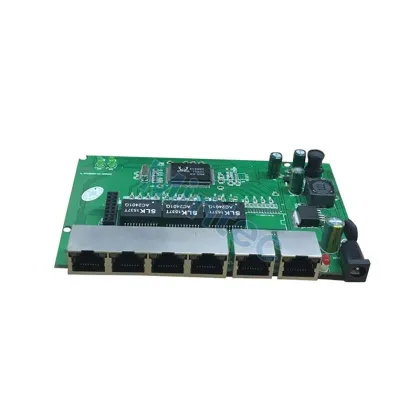The Components of Communication Electronics PCBA
At the heart of every modern communication device lies the Printed Circuit Board Assembly (PCBA), a fundamental building block that facilitates the transfer of data and information. Communication Electronics PCBA, in particular, is a specialized form of PCBA designed to cater specifically to the diverse and dynamic communication needs of today's world.

The Components of Communication Electronics PCBA
1. Microcontrollers and Processors
Microcontrollers and processors are the brains of the Communication Electronics PCBA. They handle data processing, execute instructions, and control the overall functioning of the device. Advanced microcontrollers and processors ensure high-speed data processing, enabling real-time communication in various applications.
2. Communication Interfaces
Communication Electronics PCBA is equipped with various communication interfaces, such as Wi-Fi, Bluetooth, Ethernet, GSM, and NFC. These interfaces enable seamless communication between the device and other connected systems, empowering users to exchange data efficiently.
3. RF Modules
Radio Frequency (RF) modules are essential for wireless communication. These modules enable the transmission and reception of data over long distances, making them crucial components in wireless devices like smartphones, IoT devices, and more.
4. Power Management Circuitry
Efficient power management is a vital aspect of any electronic device. Communication Electronics PCBA integrates sophisticated power management circuitry to ensure optimal power distribution, minimizing energy consumption, and extending battery life.
5. Memory Units
Communication Electronics PCBA incorporates various memory units, including Random Access Memory (RAM) and Read-Only Memory (ROM). These memory units store and retrieve data, enabling seamless multitasking and quick access to essential information.
Applications of Communication Electronics PCBA
The versatility of Communication PCBA makes it an indispensable component in a wide range of applications across diverse industries.
1. Telecommunications
In the telecommunications industry, Communication Electronics PCBA forms the backbone of network infrastructure, facilitating voice and data communication over vast distances. It enables seamless connectivity in devices like routers, switches, and communication towers.
2. Consumer Electronics
In the realm of consumer electronics, Communication Electronics PCBA is the driving force behind smartphones, tablets, smart TVs, and wearable devices. It empowers users to stay connected and access information on the go.
Recommended article:How Do Deep Cycle Battery packs Work?
What are Types and Applications of Lithium Batteries?
Small Size, Big Impact: How Micro Camera Modules Are Changing Industries
Choosing and Installing PE Cable Threading Pipe
How Does the Electric Blanket Controller Work?
What happens when a PTC is heated?
LED video walls
3. Internet of Things (IoT)
The Internet of Things (IoT) revolution would not be possible without Communication Electronics PCBA. IoT devices, ranging from smart home appliances to industrial sensors, rely on PCBA for communication and data exchange.
4. Automotive
Modern vehicles are becoming increasingly connected and autonomous. Communication Electronics PCBA plays a pivotal role in enabling advanced driver-assistance systems, infotainment, and telematics.
5. Medical Devices
In the medical field, Communication Electronics PCBA enables innovative healthcare devices and equipment, supporting remote patient monitoring, telemedicine, and data-driven diagnostics.
Advantages of Communication Electronics PCBA
1. Seamless Connectivity
Communication Electronics PCBA ensures seamless connectivity, allowing devices to interact with each other and share information effortlessly.
2. Enhanced Efficiency
By optimizing data processing and power management, Communication Electronics PCBA enhances the overall efficiency and performance of electronic devices.
3. Scalability
Communication Electronics PCBA can be designed to cater to specific communication requirements, making it highly scalable for various applications.
4. Reliability
With the use of high-quality components and stringent quality control, Communication Electronics PCBA ensures reliable performance even under demanding conditions.
Conclusion
Communication Electronics PCBA is a technological marvel that underpins the interconnected world we live in today. As technology continues to advance, the demand for efficient and reliable communication solutions will only grow. At Minteda, we are proud to be at the forefront of this innovation, providing cutting-edge Communication Electronics PCBA solutions to meet the evolving needs of the digital age.
As you explore the limitless possibilities of communication technology, remember that the foundation of it all lies in the intricate and efficient design of Communication Electronics PCBA. With our expertise and commitment to excellence, we are here to empower you with the tools to make your vision of a connected world a reality.
Recommended article:What Led walls are used for and how they work
How does an Automotive Agm Start-Stop Battery differ from a traditional battery?
Differences Between An LED Display And LCD Monitor
Are Compact Substations the Ideal Choice for Large-Scale Power Distribution Projects?
What is surface mount technology (SMT)?
7 Things You Should Know About Outdoor LED Billboards



